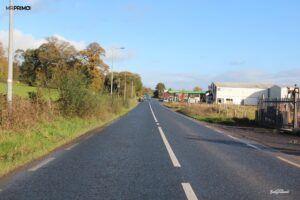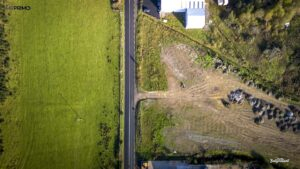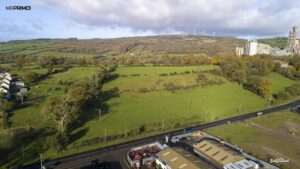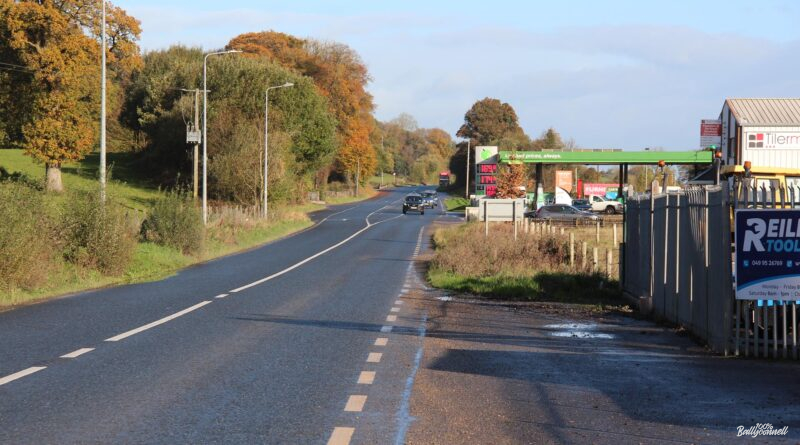Shared Cycle Lane Gains Council Support in Ballyconnell
Community-Led Call for Shared Cycle Lane Gains Council Support in Ballyconnell
A community-driven proposal for safe cycling and walking infrastructure along one of West Cavan’s busiest industrial routes has received unanimous support from local councillors, demonstrating the power of grassroots advocacy in shaping local development.
Raised at a recent Cavan-Belturbet Municipal District meeting at Ballyconnell Community Centre, the discussion brought residents’ concerns about missing connections and deteriorating existing pathways directly to decision-makers. The response suggests that when communities identify their own needs, politicians listen.
Community Vision for Safer Routes

Local residents have long identified the need for safe cycling infrastructure along the Rakeelan area—a route that handles substantial daily traffic yet lacks protected lanes for cyclists and pedestrians beyond a certain point. The road serves several significant local employers and experiences heavy industrial vehicle movements throughout the day, making it challenging for those choosing active travel.
Sinn Féin Councillor Damien Brady brought this community concern to the municipal district meeting, articulating what residents have been saying for some time. “This is one of the busiest roads in the county when it comes to industrial traffic,” he told fellow representatives. “People cycling and walking to work, to school, and to access services need safe passage.”
The community’s insight is clear: a shared cycle and pedestrian lane would provide far greater benefit than a footpath alone. With more residents embracing cycling for daily commutes and environmental reasons, the infrastructure needs to keep pace with changing travel patterns. Public lighting already exists along the route, and the area falls within town speed limits—practical observations from those who use these roads every day.
Cross-Party Support for Community Initiative
The community-led proposal resonated across the political spectrum, with Fianna Fáil councillors Áine Smith and Patricia Walsh, along with Independent Brendan Fay, adding their support. When residents clearly articulate their needs, backed by daily lived experience, it creates consensus that transcends party politics.
Councillor Brady suggested pursuing Active Travel funding as the most appropriate avenue to realize the community’s vision. This government initiative specifically targets walking and cycling infrastructure, making it a natural fit for a locally-driven scheme focused on connecting people safely to employment and services.
Senior Area Engineer Paul Mulligan acknowledged the merit of the proposal, noting the ambition to extend safe infrastructure in that direction. “I do think it would be of huge benefit,” he stated, showing that when communities lead with practical solutions, technical experts recognize their value.
The Crisis on Existing Pathways

While residents look toward improved future infrastructure, they’re simultaneously dealing with the neglect of existing pathways closer to the town centre. The pathway network serving Bothar Bui, Bothar Glas, and Daisy Hill estates has fallen into a derelict state, despite serving hundreds of pedestrians daily.
These aren’t lightly-used leisure routes—they’re essential arteries connecting families, schoolchildren, and workers to the town centre. The deteriorating surfaces, overgrown vegetation, and drainage problems represent a failure to maintain infrastructure that the community depends on every single day.
Parents navigating crumbling pathways with buggies, elderly residents carefully picking their way over broken surfaces, children walking to school through overgrown sections—these daily struggles highlight a disconnect between what communities need and what they’re receiving. The heavy footfall these paths endure only emphasizes how vital they are and how urgently they require proper maintenance.
It’s precisely this kind of daily frustration that drives communities to speak up and propose solutions, as residents have done with the cycle lane extension.
Funding Challenges and Community Persistence
Mr Mulligan revealed that Cavan County Council has previously applied for funding to extend infrastructure along the Rakeelan route but was unsuccessful. Despite this setback, he confirmed that if opportunities arise to access funding for projects of this scale, the council would actively pursue them.
For a community proposing sensible infrastructure improvements, hearing about unsuccessful funding applications can be disheartening. Yet the renewed push, brought forward by residents who know these roads intimately, may carry weight that previous applications lacked.
The Active Travel programme represents the best opportunity for securing resources, particularly for a community-identified project that aligns perfectly with national objectives around sustainable transport. When funding bodies see local communities actively advocating for infrastructure rather than having it imposed from above, it strengthens the case considerably.
Why Community-Led Solutions Matter

The Ballyconnell cycle lane proposal exemplifies why grassroots advocacy matters in local development. Residents aren’t asking for vanity projects—they’re identifying genuine gaps in infrastructure based on their daily experiences navigating these routes.
A shared cycle and pedestrian lane extending toward the border and local employers would support the growing number of people choosing sustainable transport, reduce car dependency for short journeys, and make employment more accessible to those without vehicles. These aren’t abstract policy goals; they’re practical improvements rooted in how people actually live and move through their community.
The unanimous political support demonstrates that when communities clearly articulate their needs, decision-makers respond. Combined with the urgent requirement to rehabilitate existing pathways serving hundreds daily, the message from Ballyconnell residents is unmistakable: we know what we need, we’re willing to advocate for it, and we expect investment in infrastructure that works for real people.
As the council pursues funding opportunities, residents will continue making their voices heard. Community-driven initiatives like this one show that local people remain the best experts on what their own areas need. The challenge for authorities is whether they’ll match that community leadership with the investment and action required to deliver real improvements.

